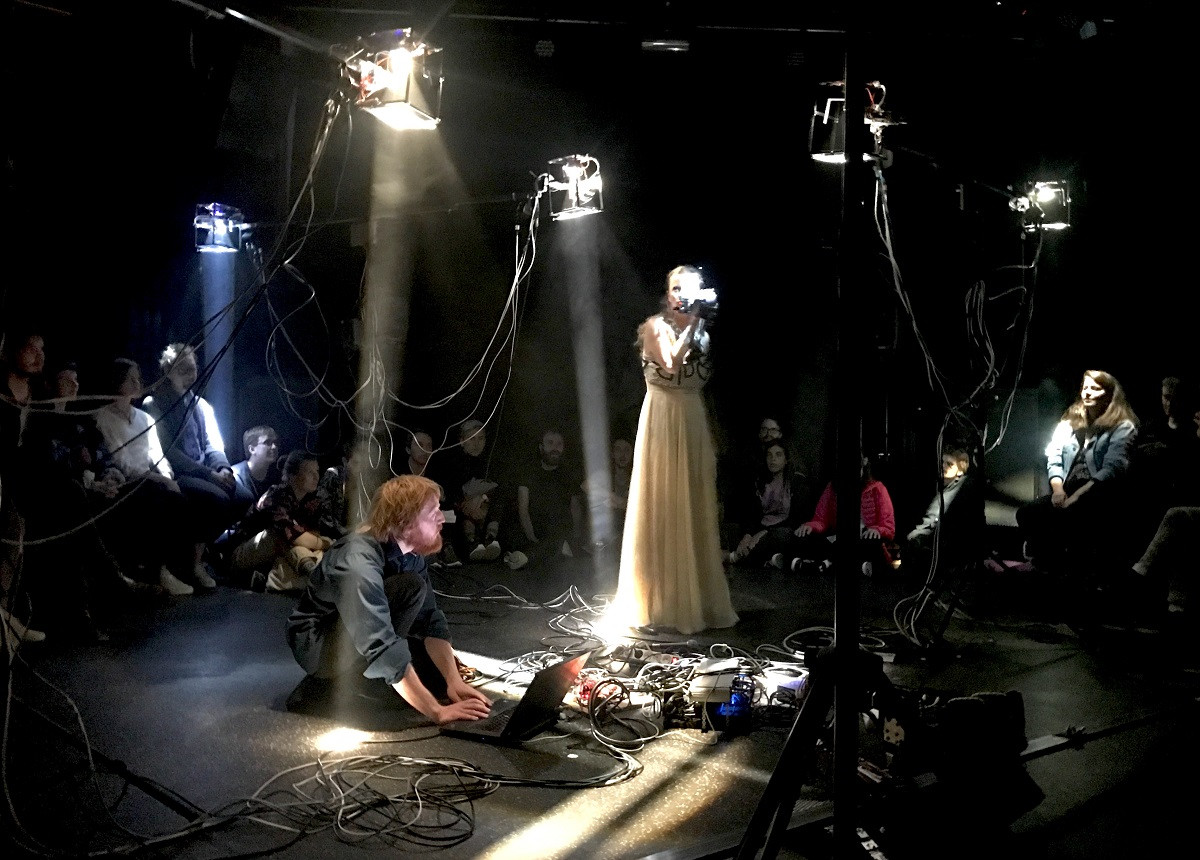
Maybe we fight, maybe we defend
Ung Nordisk Musik (Young Nordic Music) is an impossible festival. It is essentially uncurated – 35 different works, by 35 different composers, from five different countries, of any medium, of any style, chosen by five different juries, all shoved into the same programme. And now here I am, one of these 35, trying to make some kind of narrative, like a fieldmouse trying to understand a crop circle. In the years ahead, perhaps someone could look at UNM 2018 and say ‘this is where this Very Important Thing started’. But for now, it’s too early to say.
In the years ahead, perhaps someone could look at UNM 2018 and say ‘this is where this Very Important Thing started’
One thing is for sure – UNM remains vital. There is no other festival like it. Without an overarching manifesto or the preferences of an artistic director, the sheer variety of styles and approaches on display is dizzying. But that is not to say that the festival lacks focus – on the contrary, this makes it even more interesting when trends or patterns do occur without a guiding hand behind them.
35 young composers present themselves and their own answers to the problems of being a composer in 2018 – how do we create new things within an art form that is so crushingly aware of the past? How do we engage with an audience that is mostly afraid of contemporary music? How do we respond to the current economic climate and the rapidly diminishing funding opportunities? (Even though this year’s festival took place in Bergen, Norway, its application for funding from the Norwegian arts council was rejected.)
A world of extremes
If there is one thread I can tease out from the 35 works here, it’s a certain defiance in attitude and strength of conviction. Ours is a generation that cannot afford to become complacent. Things must be done full measure, or not done at all.
Take for example Ragnhild May’s literally earth-shaking Bellows for organ, synthesizers and brass quartet (a collaboration with Stefan Maier). Seismically low drones shook the entire cathedral the piece was presented in. Midway through, May solemnly walked down the aisle, playing a home-made instrument that emitted piercingly high shrieks. Then she kneeled before the altar, almost vanishing from the audience view. Extreme lows, extreme highs, extreme dynamics, simply and effectively presented.
Ours is a generation that cannot afford to become complacent. Things must be done full measure, or not done at all
Another exercise in extremes was presented by the Norwegian/Canadian/Chinese composer Tze Yeung Ho in his music-theatre work Jeg gir faen i magnoliaen!? A soprano, dressed as a clown, solemnly exchanged verbal blows with a baritone, with commentary from two accordions and cello. There was a bubble machine. Black funeral balloons were burst. At one point, one of the accordionists dramatically died (a virtuoso performance from Andreas Angell). Ho describes the work as ‘a collective commentary on life at its most fragile moment’. Regardless of the intended message of the work, it left an undeniably strong impression.
At yet another extreme sat Uno Vesje’s Bragi’s Harp, a concerto for harp and orchestra played by the composer himself. The music was aggressively tonal and firmly old fashioned – the opening ‘extended-technique’-ish harp buzzing providing the only nod to what we think of as ‘traditional’ contemporary music. Appropriately enough for a festival set in his hometown, some passages sounded almost exactly like Grieg. A statement of another kind, but a statement nonetheless.
Perhaps the fact that all of the orchestral pieces presented at the festival displayed a strong preference for tonal harmonies and standard playing techniques is telling of the approach taken by the Scandinavian young composers towards orchestral writing. Or maybe I have it the wrong way around – perhaps it more accurately displays the style of works that today’s orchestras, themselves besieged by budget cuts, will play.
Experimental safe-mode
Increasingly, it seems as if the standard instrumental constellations of contemporary music are not the places where young composers will go to experiment. As well as the aforementioned orchestral works, the art gallery concert consisting of various permutations of the traditional Pierrot ensemble was made up of several strong works that nevertheless could not be described as ‘experimental’.
Similarly, the sinfonietta, once a strong bastion of contemporary music, was reduced to an accompanying role – all of the four works presented by the young composers at the Bit20 concert were concerti. Perhaps it’s too much of a risk to go all out within the confines of these ensembles – perhaps the big story here is that young composers, afraid of being accused of being elitist or of writing inaccessible music, tone themselves down when asked to work with these larger institutions that need audience members to survive.
Perhaps these works are just the reflection of aesthetic preferences only, and remain unaffected by economic and institutional considerations
This is a nice and scary bedtime story, but I am not convinced it’s true. Perhaps these works are just the reflection of aesthetic preferences only, and remain unaffected by economic and institutional considerations. Some pieces at the other end of the spectrum could serve as a counterpoint – if composers are limited by working within larger formats, surely tape pieces, often consisting of just the composer and their laptop, would prove a fruitful ground for experimentation. But this was not the case. Most of the tape pieces (both purely electronic or with performers) were located squarely within the tradition of electronic music.
There were some very strong offerings here (my personal highlight being Maria w Horn’s melodramatic and portentous Ångermanländska bilder) but nothing exceptionally boundary-pushing. Guest composer Maja Ratkje’s Sinus Seduction (moods two), gorgeously played by saxophonist Roger Andreas Holme, did not seem out of place presented alongside this year’s works, despite being 20 years old (it was first presented at UNM in 1998).
This is not to say by any means that all the traditional genres are dead – Bara Gisladottir’s searing Otoconia proved there’s life in the string quartet yet, and there were two intense solo piano pieces by Fjola Evans and Ingibjörg Fridriksdottir. One surprising inclusion was the rehabilitation of the concert band – two works out of the 35 were scored for wind orchestra (Olivia Køppe Christoffersen’s Expand:One and Gisli Magnusson’s Svartifoss), with a work by guest composer Øyvind Torvund also on the programme.
‘Is UNM still relevant?’
But for the real experimentation we had to look beyond the standard genres. Loïc Destremau’s Speechless for four performers, holding ominous glowing red speakers in their mouths and eerily chanting ‘speech, speech, speech’, was terrifying and hilarious in equal measure.
So what was the big story of UNM 2018? An art form under attack?
Another high point for me was Alex Mørch’s Beta-Hex for opera singer and ‘robot installation’. Soprano Annemette Pødenphandt growled into a vocoder-glove, then chanted, whispered and screamed at a robotic arm that suddenly coiled itself up into life, nearly landing a crushing blow on a terrified audience member. What I had assumed was just a lighting rig sputtered into action and started rotating, turning its lights into the audience.
All the while Mørch himself squatted in the middle like some insane demon wizard, surrounded by wires and electronics. My only problem was that it was too short – a good problem for a piece to have.
Much has been written recently of the rise of the composer-performer and this trend was present at the festival. I counted only four works where the composer took a central role (not just on-stage) in the performance – the aforementioned May, Vesje and Mørch, and my own Raus. Personally I thought this a shame – several of the composers showed themselves to have a strong stage presence and performing ability in an improvised workshop concert organised by Bergen’s amateur music group Klubben (particularly Aino Tenkanen and Eetu Ranta-aho).
Maybe both the defiance and the cautiousness displayed this year were the outward signs of a kind of defensiveness that young composers have internalised. UNM 2018 at its best then became a kind of call to arms
So what was the big story of UNM 2018? An art form under attack? It was quite telling that the opening question of the panel discussion hosted by Peter Meanwell, artistic director of Borealis Festival, was ‘Is UNM still relevant?’.
Maybe both the defiance and the cautiousness displayed this year were the outward signs of a kind of defensiveness that young composers have internalised. UNM 2018 at its best then became a kind of call to arms; a demonstration that it is possible to create relevant, immediate, necessary art in these complicated times.

